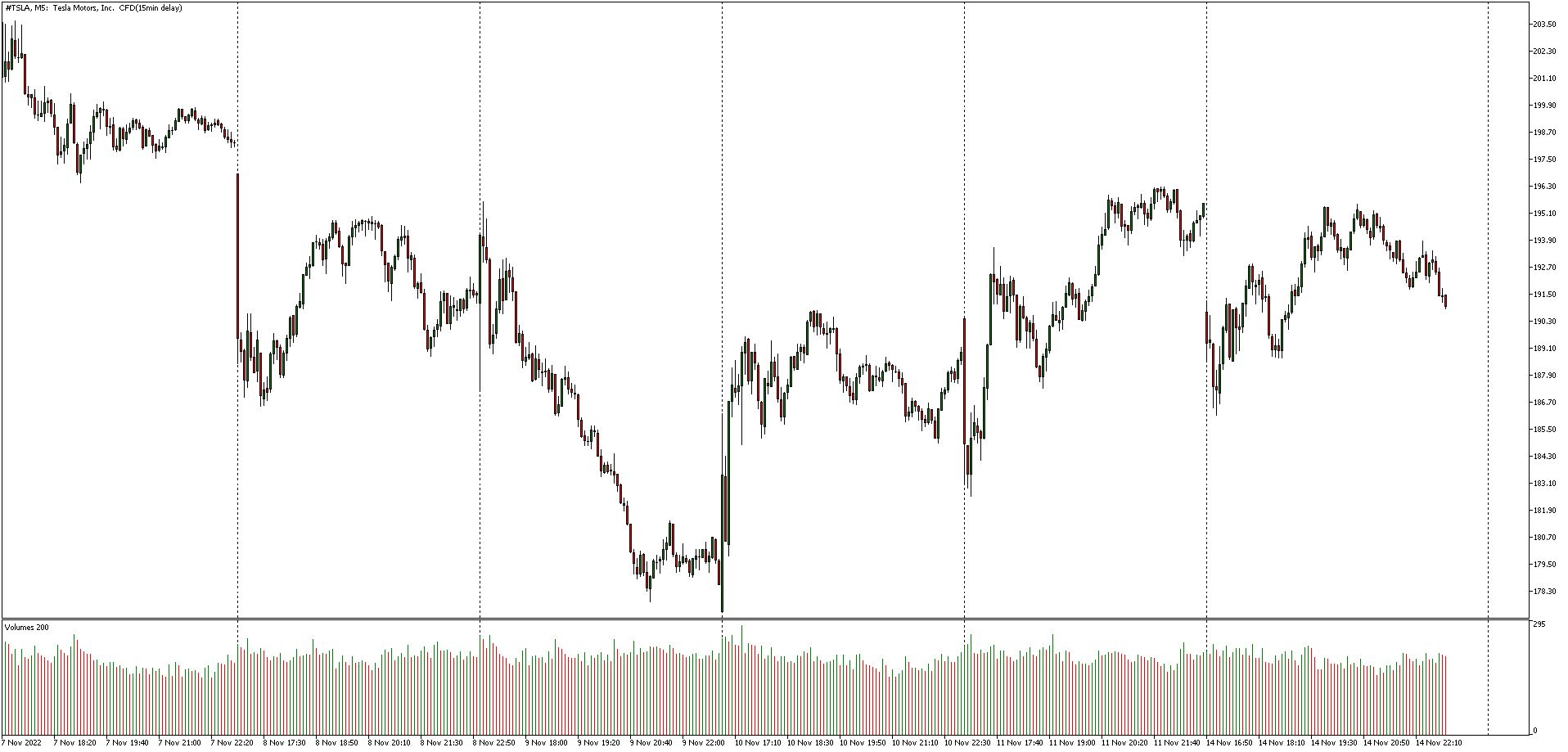Introduction
Trading stocks can be an exciting and potentially lucrative venture. Whether you are a seasoned investor or just starting out, navigating the stock market requires knowledge, skills, and a strategic approach. With the right mindset and tools, you can increase your chances of success and achieve your financial goals.
If you have been curious about how to succeed in trading stocks, this article will guide you through the essential steps to build a solid foundation. From understanding the stock market to developing effective trading strategies, we will explore key concepts and techniques that will empower you to make informed decisions and maximize your profits.
Before diving into the specifics of trading, it’s crucial to acknowledge that success in the stock market is not a guaranteed outcome. It involves risks, uncertainties, and fluctuations in market conditions. However, with dedication, perseverance, and a disciplined approach, you can increase the probability of achieving your desired results.
Throughout this article, we will explore various aspects of successful stock trading, including setting financial goals, building a diverse portfolio, conducting fundamental and technical analysis, implementing risk management techniques, and much more. By following these guidelines and continuously honing your skills, you can navigate the dynamic world of the stock market with confidence.
It is important to note that any investment involves risk, and past performance is not indicative of future results. The information provided in this article is for educational purposes only and should not be considered financial advice. Always consult with a qualified professional before making any investment decisions.
Understanding the Stock Market
In order to be successful in trading stocks, it is essential to have a solid understanding of the stock market and how it operates. The stock market is a platform where investors buy and sell shares of publicly traded companies. These shares represent ownership in the company and give investors the opportunity to participate in the company’s growth and profits.
Stocks are traded on stock exchanges, such as the New York Stock Exchange (NYSE) and the Nasdaq. These exchanges provide a centralized marketplace where buyers and sellers can trade stocks. The prices of stocks are influenced by various factors, including company performance, market conditions, economic indicators, and investor sentiment.
There are two primary types of stock market participants: investors and traders. Investors typically take a long-term approach, focusing on buying stocks with the intention of holding them for an extended period of time. They aim to benefit from the company’s growth in value and dividends over time.
On the other hand, traders have a more short-term outlook and aim to profit from short-term price fluctuations. They use various trading strategies, such as day trading and swing trading, to take advantage of market movements. Traders often rely on technical analysis and trading indicators to make short-term trading decisions.
Market volatility is a common characteristic of the stock market. Prices can fluctuate rapidly due to a multitude of factors, including economic news, corporate earnings reports, geopolitical events, and investor sentiment. It is important for traders to understand and be prepared for these ups and downs.
Moreover, it is crucial to stay informed about the overall market trends and individual companies. This can be done by regularly monitoring financial news, company announcements, and market research reports.
Understanding how the stock market functions and the various participants involved will provide a solid foundation for your trading journey. It will enable you to make informed decisions and navigate the market with confidence. In the next sections, we will delve into specific strategies and techniques that will further enhance your chances of success in trading stocks.
Setting Your Financial Goals
One of the first steps towards success in trading stocks is setting clear and realistic financial goals. Your financial goals will serve as a compass, guiding your trading decisions and helping you stay focused on what you want to achieve.
When setting your financial goals, it is important to be specific and measurable. Rather than simply aiming to make money, identify specific targets such as a desired percentage return on your investment or a specific dollar figure to reach.
Additionally, consider the timeframe for achieving your goals. Are you looking for short-term gains or are you planning to invest for the long term? Different trading strategies may be more suitable depending on your time horizon.
It is also crucial to assess your risk tolerance and align your goals accordingly. Higher-risk strategies may offer the potential for greater returns, but they also come with increased volatility and potential losses. On the other hand, more conservative strategies may provide stability but with lower potential returns.
Furthermore, it is essential to regularly review and reassess your financial goals. As your trading journey progresses, you may achieve certain milestones or encounter new opportunities. Adjusting and refining your goals as needed will ensure that they remain relevant and aligned with your evolving needs and aspirations.
Lastly, setting realistic expectations is key. While trading stocks can be profitable, it is important to remember that it also involves risks. It is unlikely to achieve extraordinary returns overnight. By setting realistic goals and acknowledging the potential challenges, you can maintain a balanced approach and avoid getting discouraged.
Setting your financial goals is a crucial foundation for your trading journey. It helps provide clarity and focus, allowing you to make informed decisions, manage risk, and stay motivated. In the next sections, we will explore how to effectively build a diverse portfolio and develop a trading strategy to help you work towards your financial objectives.
Building a Diverse Portfolio
Building a diverse portfolio is a critical aspect of successful stock trading. A diversified portfolio spreads your investments across different asset classes, sectors, and geographic regions, reducing the concentration of risk in any single investment.
Avoiding an overreliance on a single stock or sector is essential because if that particular stock or sector performs poorly, it could significantly impact your overall portfolio. By diversifying your holdings, you can potentially mitigate the impact of any individual stock’s poor performance.
There are several ways to achieve diversification in your portfolio. One approach is to invest in a broad range of stocks from different industries. This ensures that your portfolio is not overly exposed to the fortunes of a specific sector. For example, you might choose a mix of technology, healthcare, consumer goods, and financial stocks.
Another way to diversify is by investing in different asset classes, such as bonds, commodities, or real estate investment trusts (REITs). These asset classes have different risk and return profiles, and their performance may not be closely correlated with stock prices. By including a mix of asset classes, you can potentially reduce the overall volatility of your portfolio.
Geographic diversification is also important. Investing in stocks from different countries and regions can provide exposure to a variety of economic trends and market conditions. This can help protect against country-specific risks and provide potential growth opportunities in emerging markets.
It’s important to note that diversification does not guarantee profits or protect against losses in a declining market. However, it can help manage risk and optimize your chances of generating consistent returns over the long term.
Regularly monitor and rebalance your portfolio to maintain diversification. As the market and economic conditions change, the weights of different assets in your portfolio may shift. Adjusting your holdings periodically ensures that your portfolio remains aligned with your desired level of diversification.
Building a diverse portfolio is a crucial step towards long-term success in stock trading. By spreading your investments across various stocks, sectors, asset classes, and geographic regions, you can effectively manage risk and increase the potential for consistent returns. In the next sections, we will explore how to develop a trading strategy and analyze stocks using fundamental and technical analysis.
Developing a Trading Strategy
Developing a trading strategy is a vital component of successful stock trading. A trading strategy provides a systematic approach to identifying investment opportunities, managing risk, and making informed trading decisions.
The first step in developing a trading strategy is to determine your preferred trading style. There are various trading styles, including day trading, swing trading, and position trading. Each style has its own characteristics and timeframes. Selecting a style that aligns with your goals, available time, and risk tolerance is crucial.
Once you have chosen a trading style, it’s important to define your entry and exit criteria. This involves establishing specific parameters for buying and selling stocks. Entry criteria may include technical indicators, fundamental analysis, or a combination of both. Exit criteria may involve setting profit targets or utilizing stop-loss orders to limit potential losses.
Another essential aspect of a trading strategy is risk management. Determine how much capital you are willing to allocate to each trade and set a maximum percentage of your portfolio that you are willing to risk on any given trade. Establishing proper risk management techniques, such as setting stop-loss orders, can help protect your trading capital and limit potential losses.
Consistency and discipline are key in implementing a trading strategy. Stick to your defined rules and avoid making impulsive decisions based on emotions or short-term market fluctuations. Maintaining discipline and following your predetermined plan will help you avoid costly mistakes.
It is also essential to regularly evaluate and adjust your trading strategy as market conditions change. Keep up to date with market trends, economic news, and new trading techniques. Continuously learning and adapting your strategy will enable you to stay ahead of the curve and optimize your trading results.
Lastly, always keep a trading journal to track your trades and review your performance. Analyzing past trades can provide valuable insights into your strengths and weaknesses as a trader. Learn from your mistakes and capitalize on your successful trades to refine and improve your trading strategy.
Developing a trading strategy is a crucial step towards achieving consistent success in stock trading. By defining your trading style, establishing entry and exit criteria, implementing risk management techniques, and maintaining discipline, you can enhance your trading decision-making process and increase your chances of achieving your financial goals.
Conducting Fundamental Analysis
Conducting fundamental analysis is an important aspect of successful stock trading. Fundamental analysis involves evaluating the underlying factors that can impact a company’s value and future prospects. By examining a company’s financial health, industry position, and market trends, you can make more informed investment decisions.
One key component of fundamental analysis is assessing a company’s financial statements. This includes analyzing the income statement, balance sheet, and cash flow statement. These statements provide valuable insights into a company’s revenue, expenses, assets, liabilities, and cash flow. By examining these financial metrics, you can gauge the company’s profitability, financial stability, and ability to generate cash.
Another aspect of fundamental analysis is evaluating a company’s competitive position within its industry. Analyze the company’s market share, products or services, customer base, and competitive advantages. Understanding the company’s strengths and weaknesses relative to its competitors will give you a better understanding of its growth potential and long-term viability.
Economic and industry analysis is also critical in conducting fundamental analysis. Assess the macroeconomic factors that can impact the company and its industry, such as interest rates, inflation, and consumer sentiment. Evaluate industry trends, market size, and potential barriers to entry. A thorough understanding of the broader economic and industry dynamics can help you identify companies with strong growth prospects.
Furthermore, consider the company’s management team and corporate governance practices. Evaluate the leadership’s track record, experience, and alignment with shareholders’ interests. A competent and trustworthy management team is more likely to make strategic decisions that benefit the company and its shareholders.
It is important to note that fundamental analysis is a time-consuming process that requires careful research and analysis. Utilize reliable sources of information such as company filings, earnings reports, industry publications, and financial news outlets. In addition, consider using financial ratios and valuation metrics to compare the company’s performance and valuation against its peers in the industry.
While fundamental analysis is a critical tool in stock trading, it should not be the sole basis for decision-making. Combine fundamental analysis with other forms of analysis, such as technical analysis, to get a comprehensive view of the stock’s potential.
Conducting thorough fundamental analysis is crucial in making informed investment decisions. By evaluating a company’s financial health, competitive position, industry trends, and management team, you can gain valuable insights into its potential for growth and profitability. In the next section, we will explore the importance of technical analysis in stock trading.
Utilizing Technical Analysis
Utilizing technical analysis is a valuable tool in stock trading that can help you make more informed decisions based on historical price patterns and market trends. By analyzing charts and using various technical indicators, you can identify potential entry and exit points, assess market sentiment, and gauge the strength of price movements.
One of the fundamental principles of technical analysis is that historical price data can provide valuable insights into future price movements. By studying patterns and trends in stock prices, traders can make predictions about future price behavior.
There are several key concepts and indicators used in technical analysis. These include support and resistance levels, trendlines, moving averages, and oscillators such as the Relative Strength Index (RSI) and Moving Average Convergence Divergence (MACD). Each of these indicators provides unique information about price movements and can help identify potential buying or selling opportunities.
Support and resistance levels are price levels at which the stock has historically had difficulty moving above or below. Traders often look for these levels to determine potential entry or exit points. When the stock price approaches a support level, it may be a good time to buy, expecting the price to bounce back. Conversely, when the price approaches a resistance level, it may be a signal to sell, expecting the price to reverse downwards.
Trendlines are useful tools for identifying the direction of a stock’s price movement. An upward sloping trendline indicates an uptrend, while a downward sloping trendline indicates a downtrend. Trendlines can help traders identify potential breakout or reversal points in the stock’s price.
Moving averages are commonly used to smooth out price data and identify trends. The 50-day and 200-day moving averages are commonly used by traders to gauge the overall direction of a stock’s price movement. When the shorter-term moving average crosses above the longer-term moving average, it may indicate a bullish signal, while a cross below may indicate a bearish signal.
Oscillators such as the RSI and MACD can help identify overbought or oversold conditions in a stock’s price. These indicators can indicate potential reversal points where the stock may be due for a price correction.
It is important to note that technical analysis is not foolproof and should be used in conjunction with other forms of analysis. It is also important to remember that past performance is not indicative of future results. However, by utilizing technical analysis, you can gain insights into market trends, identify potential trading opportunities, and improve your timing of buy and sell decisions.
Understanding and utilizing technical analysis can be a valuable tool to enhance your trading decisions. By analyzing price patterns, using various indicators, and staying attuned to market trends, you can increase your likelihood of success in stock trading. In the next section, we will explore the importance of implementing risk management techniques to protect your trading capital.
Implementing Risk Management Techniques
Implementing effective risk management techniques is crucial for success in stock trading. The stock market is inherently unpredictable, and there is always a level of risk involved. By implementing proper risk management strategies, you can protect your trading capital and minimize potential losses.
One of the key risk management techniques is determining an appropriate position size for each trade. Position sizing refers to the allocation of your trading capital to each trade. It is important to avoid risking too much of your capital on a single trade, as a significant loss can severely impact your overall portfolio. A common rule of thumb is to risk no more than 1-2% of your trading capital on any given trade.
Another risk management technique is setting stop-loss orders. A stop-loss order is an instruction to sell a stock if it reaches a predetermined price, limiting potential losses. By setting a stop-loss order, you can protect yourself from significant losses if a trade goes against you. It is important to determine an appropriate stop-loss level based on the volatility of the stock and your risk tolerance.
Diversification, as mentioned earlier, is another risk management technique. By spreading your investments across different stocks, sectors, and asset classes, you can minimize the impact of any individual investment on your overall portfolio. Diversification helps to reduce the potential risk associated with a single stock or sector experiencing a significant decline.
Regular monitoring of your trades is essential for effective risk management. Stay updated with market news, earnings reports, and other relevant information that may impact your investments. By staying informed, you can make timely decisions to protect your trading capital and adjust your risk management strategies as needed.
Managing your emotions is also a crucial aspect of risk management. It is common for traders to experience fear, greed, and impatience, which can lead to irrational decision-making. It is important to stick to your trading plan, avoid impulsive trades based on emotions, and make decisions based on rational analysis and discipline.
Continuous learning and improvement are vital for successful risk management. Educate yourself on trading strategies, risk management techniques, and market dynamics. Stay updated with the latest trends and techniques in risk management and implement them in your trading approach.
By implementing effective risk management techniques, you can protect your trading capital, reduce the impact of losses, and enhance your chances of long-term success in stock trading. In the next section, we will explore the importance of learning from past trades and how it can help improve your trading performance.
Learning from Past Trades
Learning from past trades is a key component of improving your trading performance and becoming a more successful stock trader. Analyzing your past trades allows you to identify patterns, learn from mistakes, and refine your trading strategy.
One of the first steps in learning from past trades is keeping a detailed trading journal. Record and analyze each trade, including the entry and exit points, the reasoning behind the trade, and the outcome. By maintaining a journal, you can track your progress, identify patterns, and evaluate the effectiveness of your trading decisions.
Reviewing your past trades helps you identify any recurring mistakes or patterns that may be impacting your performance. Are you consistently making impulsive trades? Are you ignoring your trading plan? Identifying these patterns can help you make necessary adjustments and improve your trading discipline.
It’s also essential to analyze both winning and losing trades. Understanding what worked well in your winning trades can help you repeat successful strategies, while analyzing losing trades can provide insights into areas for improvement. Look for factors that may have influenced the outcome, such as market conditions, technical indicators, or the timing of your entry or exit points.
Consider seeking feedback from mentors or joining trading communities. Engaging with experienced traders can provide valuable insights and perspectives. They can help you identify blind spots, provide constructive criticism, and offer guidance based on their own experiences.
Using technology and tools can also aid in the analysis of past trades. There are various trading software and platforms available that allow you to analyze your performance, track your trades, and identify areas for improvement. Utilizing these tools can provide more data-driven insights into your trading patterns.
Continuously learning from your past trades is a dynamic process. As you gain experience and refine your trading strategies, regularly revisit your trading journal and analyze your progress. Identify areas where you can make adjustments and implement changes accordingly.
It’s important to remember that learning from past trades doesn’t guarantee future success, as market conditions are constantly changing. However, by reflecting on your past trades and continuously improving your trading skills, you can increase your probability of making more informed and profitable trading decisions.
In the next section, we will explore the importance of staying updated with market news and how it can contribute to your trading success.
Staying Updated with Market News
Staying updated with market news is a crucial aspect of successful stock trading. The stock market is influenced by a wide range of factors, including economic news, corporate announcements, geopolitical events, and investor sentiment. Keeping yourself informed about these developments can help you make more informed trading decisions and stay ahead of market trends.
One of the primary sources of market news is financial news outlets. These include newspapers, websites, television networks, and podcasts that provide real-time updates on market conditions, economic indicators, company earnings reports, and other relevant information. Following trusted news sources can help you stay on top of the latest market trends and make timely decisions.
In addition to financial news outlets, it is important to monitor company-specific news. This includes announcements related to earnings, product launches, mergers and acquisitions, and regulatory developments. Understanding the impact of these news events on individual stocks can help you assess potential trading opportunities or risks.
Social media platforms can also be valuable sources of market news. Many financial experts, traders, and companies share insights, analysis, and real-time updates on platforms like Twitter, LinkedIn, and StockTwits. Following credible sources in your areas of interest can provide valuable market information and different perspectives.
Another useful tool is an economic calendar, which provides a schedule of upcoming economic releases and important events. Economic indicators such as GDP growth, job reports, interest rate decisions, and inflation data can significantly impact the stock market. Referencing an economic calendar allows you to anticipate and understand potential market movements resulting from these releases.
Staying updated with market news also involves monitoring global events and macroeconomic conditions. Geopolitical events, international trade policies, and global economic trends can have far-reaching effects on stock markets. Understanding these influences can help you make more informed decisions and manage potential risks.
While staying updated with market news is essential, it’s important to filter and verify information from various sources. Misinformation or false reports can mislead traders and impact their decision-making. Rely on reputable sources and verify information with multiple sources before making any trading decisions.
By staying informed with market news, you can identify potential trading opportunities, manage risk, and make more informed decisions. The ability to react quickly and accurately to market events can provide a competitive edge in stock trading. In the next section, we will explore the benefits of finding a mentor or joining a trading community to further enhance your trading skills.
Finding a Mentor or Joining a Trading Community
Finding a mentor or joining a trading community can be immensely beneficial for your growth as a stock trader. Engaging with experienced traders and like-minded individuals provides opportunities for learning, feedback, and support, ultimately enhancing your trading skills and increasing your chances of success.
A mentor is an experienced trader who can offer guidance, share insights, and provide valuable advice based on their own trading experiences. They can help you navigate the complexities of the stock market, provide feedback on your trading strategies, and offer a different perspective on the market. A mentor can also help you avoid common pitfalls and accelerate your learning curve.
When seeking a mentor, consider their level of experience, trading style, and compatibility with your goals and values. Look for individuals who have a track record of success, a willingness to share their knowledge, and a genuine interest in helping others succeed. Networking events, online forums, and trading communities are often excellent places to connect with potential mentors.
Joining a trading community, whether online or in person, can provide a supportive and collaborative environment for traders. Being part of a community allows you to share ideas, discuss trading strategies, and exchange insights with fellow traders. It can also serve as a platform for seeking advice, receiving feedback on your trading ideas, and learning from the experiences of others.
In a trading community, you can engage in discussions about market trends, trading techniques, and trading psychology. By actively participating in the community, you can learn from the collective knowledge and experiences of other traders, gain new perspectives, and challenge your own beliefs and strategies.
Online trading forums, social media groups, and dedicated trading platforms often serve as valuable resources when seeking a trading community. Look for communities where members actively contribute, share valuable insights, and engage in constructive discussions.
Interacting with experienced traders and being part of a trading community can help you stay motivated, accountable, and focused on your trading goals. It provides a support network where you can share successes, seek guidance during challenging times, and celebrate milestones together.
Remember that while mentors and trading communities can provide valuable guidance and support, ultimately, the responsibility for your trading decisions lies with you. Utilize the knowledge and insights gained from mentors and trading communities to inform your own analysis and decision-making process.
In the next sections, we will explore the importance of patience and discipline in stock trading and how they contribute to long-term success.
Embracing Patience and Discipline
Patience and discipline are two vital qualities that every successful stock trader must embrace. In the fast-paced and often volatile stock market, these qualities help maintain focus, make rational decisions, and navigate the inevitable challenges that come with trading.
Patience is particularly crucial in stock trading. It is easy to get caught up in the excitement of quick gains or to feel the urge to constantly trade. However, successful traders understand that patience is key. They wait for the right opportunities, diligently analyze market conditions, and exercise restraint when necessary.
Patience allows traders to avoid impulsive decisions and instead focuses on high-quality setups that align with their trading strategies. By waiting for favorable conditions, traders can enter and exit trades with greater confidence, increasing the probability of success.
Discipline goes hand in hand with patience. It involves sticking to a well-defined trading plan, following predetermined rules, and avoiding emotional decision-making. Discipline allows traders to overcome the natural tendencies of fear and greed that can cloud judgment and lead to poor trading decisions.
Disciplined traders adhere to risk management strategies, such as setting stop-loss orders and sticking to predetermined position sizes. They resist the temptation to deviate from their trading plan based on short-term market fluctuations or external influences.
Developing discipline also involves maintaining consistency in trading routines. Consistency in approach, time allocation, research, and analysis helps traders build confidence in their abilities and reduces the chances of making impulsive or uninformed decisions.
Both patience and discipline require a commitment to continuous learning and self-improvement. Traders must constantly evaluate their results, learn from mistakes, and refine their strategies. It may take time to see consistent returns, but the journey is characterized by gradual improvement and the ability to adapt to changing market conditions.
It is important to note that exercising patience and discipline does not guarantee profits in every trade. The stock market can be unpredictable, and setbacks are not uncommon. However, by embracing these qualities, traders can position themselves for long-term success and navigate the ups and downs of the market with resilience.
In the next section, we will explore strategies for overcoming emotional trading, which can help traders stay focused and objective in their decision-making process.
Overcoming Emotional Trading
Overcoming emotional trading is a critical aspect of achieving success in the stock market. Emotions, such as fear and greed, often accompany trading decisions and can lead to impulsive and irrational actions. However, by recognizing and managing these emotions, traders can make more objective and rational decisions.
One of the first steps in overcoming emotional trading is understanding the psychological biases that can influence decision-making. Common biases include confirmation bias, where traders seek out information that supports their existing beliefs, and loss aversion, where the fear of losing outweighs the potential for gain. By recognizing these biases, traders can make more informed and rational choices.
Developing a trading plan and sticking to it is crucial in avoiding emotional trading. A well-defined trading plan outlines clear entry and exit strategies, risk management rules, and criteria for decision-making. Following the plan helps to reduce the impact of emotional impulses and keeps traders focused on the long-term strategy.
Implementing risk management techniques, such as setting stop-loss orders and determining position sizes, can also help minimize emotional decision-making. By having predetermined risk levels in place, traders can avoid making impulsive decisions driven by fear or the desire to recoup losses.
Another effective strategy is to develop a support system. Surrounding yourself with like-minded individuals, such as mentors or fellow traders, can provide a network of support. Sharing experiences, discussing challenges, and exchanging insights with others who understand the emotions involved in trading can help put things into perspective and provide valuable guidance.
Using automation and technology can also assist in overcoming emotional trading. Automated trading systems can execute trades based on predetermined criteria, reducing the need for constant manual intervention. This allows traders to avoid the temptation to make impulsive decisions based on short-term market fluctuations.
Practicing mindfulness and self-awareness techniques can help traders become more attuned to their emotions and thoughts. Taking breaks, engaging in relaxation techniques, or journaling can provide clarity and assist in making more rational trading decisions.
Continuous education and learning about trading psychology can further aid in overcoming emotional trading. Understanding the psychological factors that influence decision-making can help traders identify and manage emotions as they arise. Utilizing books, courses, or workshops on trading psychology can provide valuable insights into optimizing emotional decision-making.
Remember, overcoming emotional trading is an ongoing process, and it takes time to develop the necessary discipline and mental fortitude. By staying self-aware, disciplined, and focused on long-term objectives, traders can minimize emotional biases and make more informed decisions in the stock market.
In the next section, we will explore the importance of developing a growth mindset as a trader and the ways it can contribute to long-term success.
Developing a Growth Mindset
Developing a growth mindset is essential for long-term success as a trader. A growth mindset is characterized by a belief that abilities and skills can be developed through dedication, effort, and continuous learning. By adopting a growth mindset, traders can embrace challenges, persist through setbacks, and continually improve their trading skills.
One of the key aspects of a growth mindset is embracing learning and seeking opportunities for growth. Successful traders understand that the stock market is dynamic and constantly evolving. They have a thirst for knowledge and are willing to invest time and effort into expanding their understanding of trading strategies, market trends, and new technologies.
Traders with a growth mindset view failures and setbacks as opportunities for learning and improvement. They do not get discouraged by losses or mistakes, but instead analyze them to identify areas of weakness or areas for improvement. The focus is on learning from experience and applying those lessons to future trades.
Adopting a growth mindset also involves being open to feedback and seeking guidance from mentors or experienced traders. Rather than feeling threatened by criticism, traders with a growth mindset embrace it as an opportunity to gain valuable insights and correct their mistakes. They see feedback as a means to grow and refine their trading skills.
Believing in one’s ability to learn and improve is a fundamental component of a growth mindset. Traders with a growth mindset understand that their abilities are not fixed, but can be developed over time. They remain persistent and resilient in the face of challenges, knowing that effort, practice, and perseverance can lead to progress and success.
Furthermore, a growth mindset acknowledges that setbacks and losses are a natural part of trading. Instead of viewing them as failures, they see them as valuable lessons that contribute to their growth as a trader. They are not discouraged by temporary setbacks but see them as opportunities to adjust their strategy and improve their approach.
Developing a growth mindset requires a commitment to continuous improvement and a willingness to step out of one’s comfort zone. Traders with a growth mindset actively seek challenges, engage in deliberate practice, and embrace new trading techniques or strategies. They understand that true growth comes from stretching their abilities and constantly pushing the boundaries of their knowledge and skills.
Cultivating a growth mindset is a lifelong journey. Traders who develop a growth mindset understand that trading success is not solely determined by innate talent, but rather by one’s ability to learn, adapt, and improve. By fostering a growth mindset, traders can set themselves up for long-term success and continually evolve as traders in the dynamic world of the stock market.
In the next sections, we will explore the importance of dedication to continuous learning and improvement as well as the importance of staying disciplined in stock trading.
Dedication to Continuous Learning and Improvement
Dedicating yourself to continuous learning and improvement is a fundamental aspect of achieving long-term success in stock trading. The stock market is dynamic and constantly evolving, making it essential for traders to stay updated with new information, strategies, and market trends to make informed decisions.
One of the key ways to foster continuous learning is through staying informed about the latest developments in the financial industry. Subscribe to reputable financial news sources, follow financial blogs and podcasts, and regularly read books on trading and investing. Staying updated with market news, economic indicators, and global events will help you make more informed trading decisions.
Furthermore, engaging in continuous learning involves dedicating time to study and research. Explore different trading strategies, technical analysis tools, and fundamental analysis techniques. Attend webinars, workshops, or seminars that focus on trading education. Being a lifelong student of the markets is crucial for staying ahead and adapting to changing conditions.
Additionally, consider expanding your knowledge beyond trading techniques. Develop a deeper understanding of economics, psychology, and behavioral finance. These fields provide insights into market dynamics, investor behavior, and the impact of emotional biases on trading decisions.
Reviewing and analyzing your past trades, as discussed earlier, is another valuable way to learn and improve. By examining your successes and failures, you can identify patterns, pinpoint areas for improvement, and refine your trading strategies. Regularly evaluate your performance, make adjustments as needed, and track your progress over time.
Building a network of mentors, fellow traders, or joining trading communities can provide valuable insights and perspectives. Engaging with experienced traders and sharing experiences and ideas can broaden your understanding and challenge your existing beliefs. Leverage the collective knowledge of your peers to continuously learn and grow as a trader.
Acknowledge that learning and improvement take time and effort. Be willing to put in the necessary practice and conduct thorough research before making trading decisions. Embrace the mindset of a perpetual student, always seeking opportunities to expand your knowledge and refine your skillset.
Continuous learning and improvement go hand in hand with adaptability. Remain flexible and open-minded in your trading approach. As market conditions change, be willing to adjust your strategies and tactics accordingly. Stay curious, experiment with new approaches, and be willing to learn from both successes and failures.
By dedicating yourself to continuous learning and improvement, you can stay ahead of the curve in the ever-changing stock market landscape. Embrace the mindset of growth and adaptability, and commit yourself to lifelong learning and improvement. In the next section, we will explore the importance of staying disciplined in stock trading.
Conclusion
In conclusion, achieving success in stock trading requires a combination of knowledge, skills, and the right mindset. By following the steps outlined in this article, you can enhance your trading abilities and increase your chances of reaching your financial goals.
Understanding the stock market and its various participants is crucial for navigating the complex world of trading. Setting clear and realistic financial goals provides you with a sense of direction and purpose.
Building a diverse portfolio helps manage risks and optimize investment opportunities. Developing a trading strategy, conducting fundamental and technical analysis, and implementing risk management techniques contribute to informed decision-making and improved trading performance.
Learning from past trades, staying updated with market news, and seeking guidance from mentors or trading communities can further enhance your skills and help you adapt to changing market conditions.
Embracing patience and discipline in your trading approach allows you to make rational decisions, stick to your trading plan, and avoid impulsive actions based on emotions. A growth mindset, combined with a dedication to continuous learning and improvement, positions you for long-term success in the stock market.
Ultimately, success in stock trading is not guaranteed, and it requires ongoing effort, practice, and continuous adaptation. The stock market is inherently unpredictable, and setbacks are part of the journey. However, by following these principles and remaining focused on your goals, you increase your chances of achieving consistent profitability over time.
Remember, always consult with a qualified professional before making any investment decisions or implementing trading strategies. The information provided in this article is for educational purposes only and should not be considered financial advice.

























